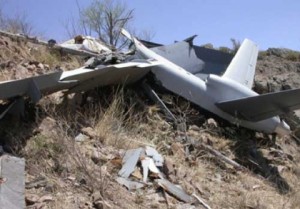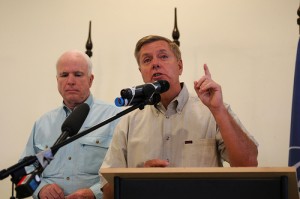More Collateral Damage From Mad Rush to Rely on Drones
Marcy already covered the very important Greg Miller Washington Post article on drones and the way the Obama administration is growing ever more reliant on their use. I would like to focus on more of the collateral damage from drone use as described in two Los Angeles Times articles from this week. Today’s article discusses the growing reliance on civilian contractors in the use of drones. Earlier in the week, we learned about the “death squads” roaming the tribal areas of Pakistan doling out revenge on those thought to have sold information used by the US in developing target information. Taken together, these articles demonstrate how the excessive reliance on drones is outstripping the military and CIA support infrastructure. This matter will be only be made worse by the fact that the number of US personnel on the ground within Pakistan to develop intelligence has been cut to one fourth the previous level.
Today’s LA Times article opens with a description of the difficulties that ensue when civilians take part in analysis of video feeds from drones that hit civilian targets:
After a U.S. airstrike mistakenly killed at least 15 Afghans in 2010, the Army officer investigating the accident was surprised to discover that an American civilian had played a central role: analyzing video feeds from a Predator drone keeping watch from above.
The contractor had overseen other analysts at Air Force Special Operations Command at Hurlburt Field in Florida as the drone tracked suspected insurgents near a small unit of U.S. soldiers in rugged hills of central Afghanistan. Based partly on her analysis, an Army captain ordered an airstrike on a convoy that turned out to be carrying innocent men, women and children.
We learn in the article that maintaining drones in the air requires a very large contingent of ground support, with Predators requiring over 150 ground crew for a 24 hour flight and twice that amount for the larger drones. We are already short on these ground crews and yet the number of these medium and large drones is expected to go from the current 230 to 960 within ten years. But don’t worry, only 44 hours of training are required to certify a pilot!
In relying so heavily on civilian contractors, the US is flirting with breaking the international laws of war. Also from today’s article: Read more →




